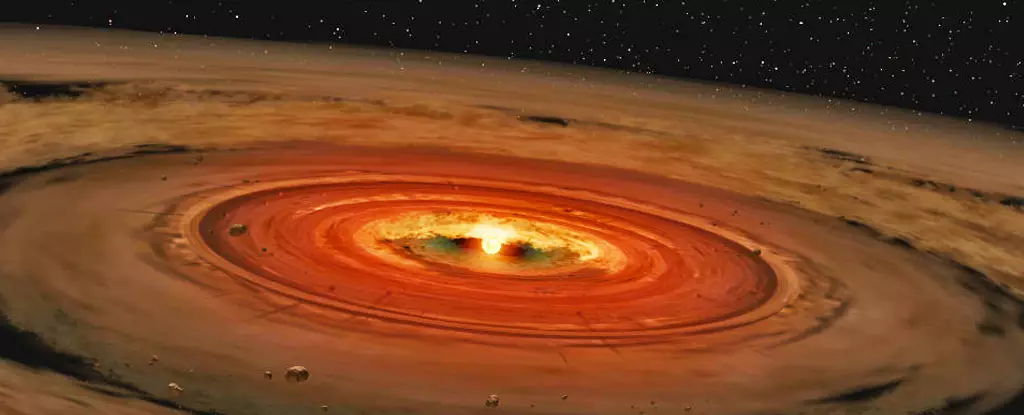Located about 1,000 light-years away from Earth, IRAS 23077+6707 (IRAS 23077) is a cosmic structure that resembles a giant butterfly. Ciprian T. Berghea, an astronomer with the US Naval Observatory, first observed this structure back in 2016 using the Panoramic Survey Telescope and Rapid Response System (Pan-STARRS). Surprisingly, the structure has remained unchanged over the years, prompting astronomers to delve deeper into understanding what IRAS 23077 could be.
Recently, two international teams of astronomers conducted follow-up observations using the Submillimeter Array at the Smithsonian Astrophysical Observatory (SAO) in Hawaii to gain a better understanding of IRAS 23077. Through a series of papers detailing their findings, the teams revealed that IRAS 23077 is, in fact, a young star surrounded by an exceptionally massive protoplanetary debris disk – the largest of its kind ever observed. This discovery sheds new light on the process of planet formation and the environments in which it occurs.
Protoplanetary disks are essentially nurseries for planets, consisting of gas and dust that have gathered around newly formed stars. Over time, these disks evolve into rings as material clumps together to form protoplanets in specific orbits, eventually leading to the creation of rocky planets, gas giants, and icy bodies. By studying these disks, astronomers can determine the size and mass of young stars, as they exhibit distinct rotational signatures. However, obtaining precise observations of these disks can be challenging, especially when they are oriented edge-on relative to Earth, obscuring light from the parent star.
The combined efforts of the Pan-STARRS and Submillimeter Array teams revealed remarkable findings about IRAS 23077. Kristina Monsch, an astrophysicist at the SAO and a postdoctoral fellow at the CfA, led the SMA campaign and shared their groundbreaking discoveries. The data obtained from the SMA confirmed the presence of a massive planet-forming disk around IRAS 23077, rich in dust and gas – essential building blocks for planets. This disk was found to be rotating around a star estimated to be two to four times more massive than the Sun, and contains enough material to form numerous giant planets extending over 300 times the distance between the Sun and Jupiter.
The discovery of such an extensive and bright protoplanetary disk like IRAS 23077 raises important questions and prompts further investigation. It highlights the need to explore similar objects in our galaxy to gain insights into planetary systems in their early stages of formation. This could provide valuable information on how our Solar System and other planetary systems came into existence. Moreover, the discovery of IRAS 23077 motivates astronomers to uncover more of these objects and examine the formation of planets in extreme young environments. This research could provide valuable comparisons to exoplanet populations around distant stars with higher masses than the Sun.
The remarkable discovery of the enormous protoplanetary disk surrounding IRAS 23077 offers a glimpse into the fascinating process of planet formation and provides valuable insights into the origins of planetary systems. The findings from this study pave the way for further exploration and research into similar cosmic structures, driving our understanding of the vast universe we inhabit.


Leave a Reply